drag badge here
Gaucho
gamer level 5
3477 xp
3477 xp
followers
6
6
Use my invite URL to register (this will give me kudos)
https://boardgaming.com/register/?invited_by=bpg270
profile badges
...
...
...
...
recent achievements

I Walk the Talk!
Claim that you have played a game today by clicking the "Played Today!" button on a game page 100 times.
Claim that you have played a game today by clicking the "Played Today!" button on a game page 100 times.

Gamer - Level 5
Earn Gamer XP to level up!
Earn Gamer XP to level up!

I Got What I Wanted
Add a game to your Owned list that was previously in your Wish list.
Add a game to your Owned list that was previously in your Wish list.

I Love Playin' Games
Claim that you have played a game today by clicking the "Played Today!" button on a game page 50 times.
Claim that you have played a game today by clicking the "Played Today!" button on a game page 50 times.
Player Stats
Critic (lvl 1)
120 xp
120 xp
Explorer (lvl 2)
643 xp
643 xp
Professor (lvl 1)
138 xp
138 xp
Reporter (lvl 1)
126 xp
126 xp
About Me
I love games that bring me to the brink of war and then shove me over against my buddies. I am also always looking for games that I can play with my young family instead of turning on the TV.










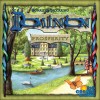















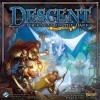



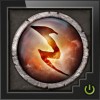


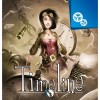
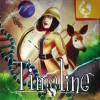
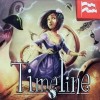
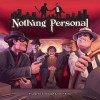

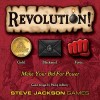






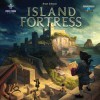

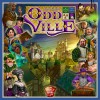

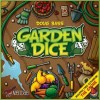
Lost Cities: The Card Game
Simply stated, this game is fast, portable, easy to learn, and, most importantly, fun. It is a two player back and forth game that revolves around a rummy give and take format. For those of you who are a little savvier with the gaming terms, it’s a modification on a trick taking. I have noticed that this style of game is a cheap and easy way to build tension and play through wild gambles paying off or blowing up in your face. Before I get off into my actual run-down, I will WARN you all, my beloved readers, that this game takes more brains to score than it does to play (not cool, bro… not cool).
So, the theme of the game is that you are on the hunt for lost cities. Each city is found at the end of a ten step journey. Each step of the way is represented by a number and each journey is represented by a different color. For example, if I go on the hunt for “Atlantis”, it will be done with the blue cards which number one through ten. There are five different colors/journeys you can go on. There are also backer/investor cards that can be played before the journey starts that will multiply your scores for good or for the bad. The more cards you play, and the higher those cards are, the better your score tends to be…. TENDS to be….
You will have your hand of 8 cards made up of random numbers and colors. During the turn you will put down a card and pick up a card. There are 5 discard piles, one of each color, and ten play piles, one of each color on each side of the player board (one set of play piles for you and one for your opponent). During the turn you will either play a card to your corresponding color’s play pile or the corresponding color’s discard pile. If the card is going onto a play pile, it must be a larger number than the card before it in the same color pile (if I have played a 4 as my last yellow card, my next yellow must be a 5 or higher). The investor/backer cards are played down before any number cards, and there can be up to three of them. After this, you draw a card from one of the discard piles or from the remaining un-dealt cards. You play until the last un-dealt card is picked up. That is how simple the game is!
Scoring is done like this, and you do this for each color/journey individually then lump the sum: Take each journey/color you attempted, subtract twenty, add the numbers on the cards, and then multiply that by 2,3, or 4 depending on the number of backer/investor cards that were played down before the numbers (if you played one investor its x2, two investors x3, and three is x4). There it is…. complex, mathy, and ugly….
Ok, now back to the good, AND THE REASON FOR ALL THAT MATH. This game is fun because you have to think before you start dropping cards. Because each color you start will ultimately cost you twenty points, you want to know that you will make your points back. The big points come from those investor/backer multiplying bonuses, but you have to make sure you clear your investment cost or you will be multiplying negative numbers and digging yourself a hole. If you don’t think you will get your points back, then you want to discard the cards you are not using, BUT THEN YOUR OPPONENT MAY WANT EXACTLY WHAT YOU DONT AND THEN YOU ARE HELPING THEM, BUT YOUR HAND IS TOO FULL TO MAKE GOOD MOVES SO YOU CANOIANSOPINVAIOANGPOUNRADINCAIUN…..
I think you get the idea. The seemingly overly complex math points system is what drives the game to be more than just a pick-up, put-down, trick-taking, rummy clone. It either rewards crazy gambles with blow-out style points or bone crushing debt. Even conservative players are forced to wait and watch for what the other player is going to do, in which wastes time and turns to put down point scoring cards. There is almost always a tough choice to make.
This game is great. It’s not SUPER great, but it is a good one. If my wife and I don’t have the time to play something like dominion, then this can still give us some quality bonding. I LOVE games that my wife will sit down and play with me because she is not a gamer. The math, to me, is not hard to do in my head, but for her, a pre-school teacher, it is beyond her desire to perform when she isn’t at work. Put a calculator in the box and your golden. Now get out there and game friend!